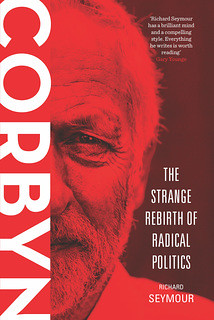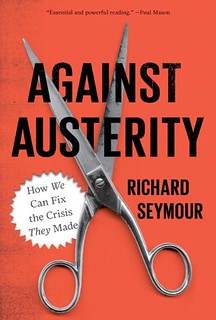Sunday, November 12, 2006
Witness to Evil posted by Richard Seymour
A few days ago, Geras invited readers of his blog to sample the lapidary wisdom of Martin Amis, who insisted that Mohammed Atta could best be understood by remembering that killing is "terrific fun", even "arousing". Geras approved, and damned the sociologically inclined left, which refused to acknowledge the impulses toward evil-doing.Sherene Razack wrote, as America planned war on Iraq:
Contemporary talk of evil merely repeats what Edward Said has described as "the moral epistemology of imperialism" (1993, 18). In the case of Palestine, to which Said applies the phrase, Britain's justification for determining that Palestine should belong to the Zionists (in the famous 1917 Balfour declaration) rested on the notion that the desires of the country's 700,000 Arabs were absolutely irrelevant. Located outside modernity, they simply could not be permitted to stall the march of progress. Like the Africans encountered by peacekeepers, the Palestinians have no personhood to disturb the simple frame of who is good and who is evil.
...
It is perhaps no accident that so many writers of D'Allaire's story compare Rwanda to Joseph Conrad's Heart of Darkness (1966), and D'Allaire to Marlowe, the novel's narrator, just as the film Apocalypse Now (1979) invites us to consider American brutality in Vietnam as born out of the brutal landscape itself. Journalist Carol Off, for instance, writing of D'Allaire, begins with an epigraph from Conrad. For her, D'Allaire is Marlowe who travels up the river in Congo and who sees the folly of colonial greed in Africa (in D'Allaire's case the folly of the U.N.) as well as the "lusty red-eyed devils" lurking in the jungle (Off 2000, 29). For those caught between "two strains of the truly sinister" (29), as both Marlowe and D'Allaire were, there is only madness, either as trauma, or as violence. In the case of the latter, peacekeepers confronted by evil are sometimes obliged to move beyond civility. The natives are bound to be ungrateful and are unlikely to stop their savagery unless met with brute force. To keep the natives in line, peacekeepers must become violent themselves, as in the rape, torture, and killing of Somalis (particularly youth, children, and women) in which Canadian, Belgian, American and Italian peacekeepers engaged while in Somalia (Razack 2000, 155). When peacekeeping violence happens, we are easily able to forgive it and even to expect it, "understanding" that it is Africa and Africans who push Western men to violence. We are even able to reverse the story, as we did in Black Hawk Down (2001), the popular film showing the heroism of American peacekeepers in Somalia and the dangers they faced there from a vengeful and bloodthirsty Somali mob.
...
The power of the story of good and evil enacted globally, whether in peace-keeping trauma narratives or in President Bush's speeches, should give us pause. For, while it is its very refusal to consider history and context that gives the story its power, its psychic appeal surely comes, paradoxically, from the mythology that informs our history. In 1973 in Regeneration Through Violence, Richard Slotkin advised us to remember that the real founding fathers of American mythology are not the politicians who drafted the constitution but rather those who (to paraphrase Faulkner's Absalom, Absalom! [1951]) tore violently a nation from the implacable and opulent wilderness—the rogues, adventurers, and land boomers; the Indian fighters, traders, missionaries, explorers, and hunters who killed and were killed until they had mastered the wilderness; the settlers who came after, suffering hardship and Indian warfare for the sake of a sacred mission or a simple desire for land; and the Indians themselves, both as they were and as they appeared to settlers, for whom they were the special demonic personification of the American wilderness. Their concerns, their hopes, their terrors, their violence, and their justifications of themselves as expressed in literature, are the foundation stones of the mythology that informs our history (Slotkin 1973, 4).










